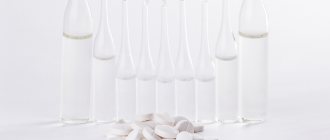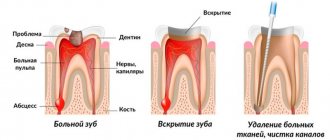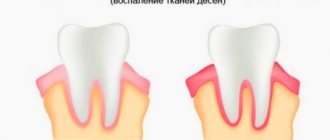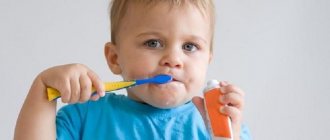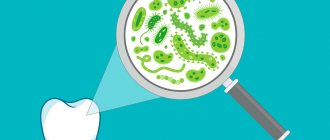All children experience the eruption of their first baby teeth differently. Some kids behave calmly and only act up a little more often than usual. For others, this process does not go so smoothly and is accompanied by constipation, refusal to eat, increased irritability and a rise in temperature.
A particular danger for infants is prolonged retention of stool. It leads to dysfunction of the gastrointestinal tract and intoxication of the body, often causing severe spasms and pain. Find out why constipation occurs during teething in children and what methods can be used to eliminate it.
What to do if teeth do not erupt “on time”?
Nothing to do. As stated earlier, the timing is quite relative and not strict data. There is such a thing as the individual characteristics of a child. Plus neonatal indicators, physical constitution, etc. Thus, the timing of the appearance of teeth in your child is normal for him. The same applies to permanent teeth.
The later the teeth appear, the healthier they will be?
Is not a fact. The timing of teething does not affect their “quality”.
What sedatives can be used during teething? Do they influence the process itself?
No, such drugs do not affect the process of teeth formation and, as a rule, have no side effects. For children with allergies, there is a sedative called Doctor Baby that does not contain lidocaine. Almost all gels contain lidocaine and inert fillers (cooling menthol, astringents and flavoring additives). You can use Dentinox, Kalgel (be careful with diathesis, because it is sweet), Kamistad (very effective, but you need to know when to stop), Mundizal, Cholisal, Solcoseryl dental paste (especially good in the presence of wounds or ulcers).
How often should such drugs be used?
Soothing gels are not antibiotics and do not need to be used according to a specific regimen. If the child is in pain, apply it, but if everything is calm, don’t. But it’s better not to use it more than 3-4 times a day and for longer than 3 days in a row.
Constipation from vitamin D3
Sometimes mothers notice constipation in their babies when they start giving them vitamin D3 for prevention. This is more a coincidence than a consequence of taking the vitamin, since taking it in the prophylactic dose prescribed by the pediatrician does not cause such an effect. But an overdose of vitamin D3 can cause constipation. The fact is that vitamin D3 promotes the absorption of calcium in the intestines. In turn, excess calcium in the intestinal contents leads to the formation of difficult-to-digest compounds that thicken the stool. Do not violate the recommended dosage. With vitamins, as with other medications, more is not better.
Is it possible to speed up teething?
Medication - no. But massaging your gums won't hurt at all. Using a clean finger, gently and gently massage your baby's gums. The baby will feel better, and the tooth will cut through faster. Just do not press hard so as not to injure the gums. You can give your child a cool spoon or pacifier to hold in his mouth. Try buying special teethers with liquid. They are placed in the refrigerator for a while, and then given to the child to chew on. All these methods are good in moderation, do not overdo it.
Can bad breath occur during teething and what is the cause?
The process of teething is associated with partial decomposition (lysis) of the mucous membrane under the action of salivary enzymes. We all notice that the amount of saliva increases sharply during this period. In this case, indeed, indicators such as viscosity, color and smell of saliva may change. Another factor is the presence of weak antibacterial substances in saliva, which are designed to prevent infection of the wound when a tooth cuts through the gum. A certain amount of blood also enters the oral cavity. When it decomposes, a sour (metallic) odor may appear.
A sharp increase in temperature during teething. What to do?
Teething does not cause a temperature jump to 39-40 degrees. Only a slight increase is possible, which is normal. Be careful: teething should not cause high fever, diarrhea, vomiting, complete loss of appetite, cramps or choking. If you have such symptoms, even if you attribute it to your teeth, consult a doctor. It is also not recommended to use antipyretics and painkillers without consulting him.
What is the difference between an increase in temperature due to teething and an increase due to other reasons? How long can the elevated temperature last in the first case?
It all depends on the individual characteristics of the child. Basically, hyperthermia and diarrhea are only secondary signs of the teething process, which in itself is a serious physiological turning point for a small organism. Fever is, rather, a reaction to inflammation of the oral mucosa. After all, at the site where the tooth exits, irritation forms, often a wound that can become infected. Thus, hyperthermia is caused not by the mechanism of tooth formation itself, but by side effects. After all, the eruption of permanent teeth, despite the similarity of histological and physiological changes, causes symptoms of colds and diarrhea extremely rarely. And it is quite simple to explain their appearance in children: changes in diet and diet, constant foreign objects in the mouth, microflora disturbance, weakened immunity in the nasopharynx. So, if high fever and loose stools continue for more than 72 hours, then teething really has nothing to do with it.
Constipation due to rotavirus infection
Mothers are more likely to associate diarrhea with rotavirus infection than constipation. But rotavirus causes inflammation in the intestines and disrupts its functions during illness, so constipation with rotavirus infection is quite possible:
- a sick child eats little, and when vomiting, he loses both fluid and the small amount of food that he was able to eat;
- an increase in temperature causes a large loss of moisture, liquid can be absorbed into the body, including from feces, thickening them;
- The work of digestive enzymes during illness is disrupted, and the number of “harmful” (pathogenic and opportunistic) bacteria increases, because of this, intestinal motility may slow down.
Teething in infants
Possible characteristics of teeth in children at the teething stage. Stay up to date.
The expansion of the spaces between the teeth is caused by the growth of the jaws. During the transition from baby teeth to permanent teeth, it is considered a normal condition. A wide gap between the upper anterior incisors is usually associated with a deep-lying maxillary frenulum. An orthodontist should observe and treat such a gap between the teeth;
- a blackish edging on the neck of the tooth can form when taking soluble iron supplements, as well as during a chronic inflammatory process (precipitation of bacteria from the leptotrichium group);
- yellowish-brown staining of teeth may be associated with the use of antibiotics - by the mother in the 2nd half of pregnancy or by the child himself during the formation of teeth;
- yellowish-greenish coloring is caused by severe disturbances in bilirubin metabolism, hemolytic conditions (destruction of red blood cells);
- reddish staining of tooth enamel is characteristic of a disease called porphyria - a congenital disorder of the metabolism of porphyrin pigment;
- malocclusions are formed by the uneven growth of the child’s jaws, as well as prolonged sucking of the nipples;
- Anomalies in the location of teeth occur for a number of reasons: trauma, congenital disorders of connective tissue metabolism, constitutional reasons (small jaw size), tumors of the alveolar process of the jaw.
- the absence of teeth before one year of age is extremely rarely associated with edentia (lack of tooth buds), which can be checked using radiovisiography as prescribed by a pediatric dentist.
If teeth erupt on time and in a certain order, this indicates the normal development of the child’s body. After all, this physiological process is in direct connection with the general health of the baby. Some atypical cases may indirectly indicate the presence of pathology. But only a special examination of the child can confirm or refute the assumptions made. The reasons must be identified and analyzed by a specialist.
How to help your child with constipation
Constipation cannot be ignored, hoping that the baby’s digestion will improve on its own. This condition always causes discomfort to the child. Please note that constipation is not necessarily associated with infrequent bowel movements. A child may poop every day, but at the same time strain, experience pain, and his stool will be formed and hard - and these are already signs of constipation. But if a baby sucks the breast with appetite, sleeps soundly, actively plays and soils his diapers, for example, after a day or two, this is most likely not constipation, but a peculiarity of his digestion.
If you are not sure whether your child’s stool is normal, be sure to consult your pediatrician. There is no need to do an enema, much less use “grandmother’s” recipes involving soap and a thermometer for prevention – “just in case.” (By the way, there are no cases at all for a thermometer and soap; these methods are simply unacceptable!) To help a child with constipation, you need to understand which condition is no longer the norm and determine the reason why the digestion failed. By eliminating it, you will save the child from the consequence - constipation. For a breastfed baby, the norm is yellow, homogeneous, mushy stool from 1-2 to 5-7 times a day. There should be no admixture of mucus and blood in it, only inclusions of white cheesy lumps are allowed. The smell should not be offensive, but simply sour. In bottle-fed children, the stool is denser and darker; as a rule, it happens less often: 1-3 times a day.
The stool of a baby of the first year may change, that is, become more liquid or denser, during transition periods when the child adapts to new conditions, in particular, to a new diet:
For example, constipation may be:
- In the first weeks of life;
- When switching to artificial feeding;
- When changing formula milk;
- During the introduction of complementary foods.
A variety of circumstances can cause constipation - from a simple mistake in diluting the mixture to congenital diseases of the digestive system. Among the most common reasons are:
- Lack of fluid, for example, preparing a more concentrated mixture than recommended by the instructions, or introducing thick complementary foods (for example, when preparing porridge, you took less water to dilute it)
- Physical or psychological discomfort associated with defecation, including irritation of the skin around the anus due to diaper dermatitis.
- Disruption of the intestinal microflora due to an infection or the use of antibacterial drugs can lead to slower peristalsis, that is, a slower movement of food through the intestines.
- Frequent uncontrolled use of enemas and certain medications, such as enzymes or laxatives. All this disrupts the natural course of digestion: it slows down peristalsis, teaching the child to defecate only after additional medicinal or mechanical influence.
- Diseases not directly related to the digestive system: rickets, hypothyroidism, iron deficiency anemia, etc.
Thus, to prevent constipation, a nursing mother needs to drink enough liquid herself: at least 2 liters per day. In the first month of a baby’s life, you need to feed on demand, and when a more or less stable regimen is established and before complementary feeding is introduced, breastfeeding should be given at intervals of no more than 3 hours during the day and 4-5 at night. For a bottle-fed baby, you need to dilute the formula according to the instructions, without violating the proportions of dry product and water.
After introducing complementary foods, regardless of the type of feeding, you need to offer additional water - a total of approximately one feeding per day, that is, 150-200 ml. If a child is prone to constipation, then the first complementary food should be vegetables, not cereal. Carefully monitor the baby's cleanliness: wash rather than use wet wipes when changing a dirty diaper, and if necessary, use diaper cream or baby powder. Do not force him to sit on the potty.
If a baby poops less than once every 36 hours, and a bottle-fed baby does not poop every day, if during the process the child strains or cries with effort, if the feces are formed and hard, contact your pediatrician.
The doctor will determine whether you are constipated or not and will advise you on how to regulate your drinking regime and nutrition in your situation, and if necessary, will prescribe procedures and medications.
It is important!
Do not self-medicate. Constipation is not a harmless disorder; it can lead to serious health problems for the child.
Treatment
Treatment of diarrhea in a child should be carried out by a specialized specialist - a pediatrician or pediatric gastroenterologist. Only a doctor can adequately assess the severity of the patient’s condition and prescribe rational therapy.
If the disease is mild, the child is given more fluids to drink to quickly make up for the deficiency. If severe dehydration develops, hospitalization and intravenous saline solutions will be required3,7.
Diet therapy
In order for intestinal function to recover faster, it is important to monitor the child’s nutrition. If the diarrhea is mild and there are no signs of intoxication, in older children the amount of food should be reduced by 15-20%. The food must be well prepared; it is better to serve the dish pureed or mashed. From 3-5 days you can return to your previous diet. With moderate diarrhea, in the first days the amount of food is reduced by 20-30%, and over the course of 4-6 days they gradually return to the usual menu14.
It is advisable not to consume foods that increase diarrhea. Food containing soft fiber should be added to the menu14.
Diet for diarrhea with mucus in a child14
| Products to exclude | Recommended Products |
|
|
Up to contents


